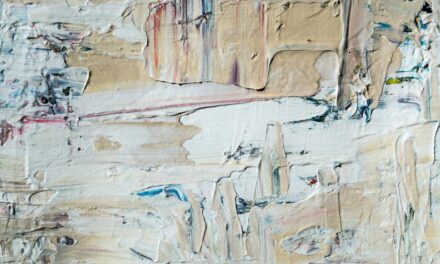Line art, a form of visual expression that relies on the use of lines to create images, has gained significant traction in the realm of digital illustration. This minimalist approach strips away the complexities of colour and shading, allowing the viewer to focus on the fundamental shapes and contours that define a subject. The beauty of line art lies in its versatility; it can convey a wide range of emotions and styles, from whimsical and playful to stark and serious.
As digital tools have evolved, artists have embraced line art not only for its aesthetic appeal but also for its ability to communicate ideas succinctly and effectively. In the digital age, line art has found a new lease of life, with artists utilising software that allows for precision and flexibility. The clean lines and sharp edges characteristic of this style are particularly well-suited to digital platforms, where the potential for manipulation and refinement is virtually limitless.
As we delve deeper into the world of line art, we will explore the tools and techniques that can elevate your illustrations, ensuring that your artistic vision is realised with clarity and finesse.
Summary
- Line art is a fundamental aspect of digital illustration, providing the foundation for creating detailed and expressive artwork.
- Choosing the right tools and software, such as graphic tablets and drawing programs, is essential for achieving precision and control in line art creation.
- Understanding line weight and variation is crucial for adding depth and dimension to your artwork, as well as conveying different textures and forms.
- Tips for creating crisp and clean lines include using stabilisation features, adjusting brush settings, and practising smooth and confident strokes.
- Utilising layers and masks in your digital illustration workflow allows for precise editing, adjustments, and experimentation with different elements of your line art.
Choosing the Right Tools and Software for Line Art
Software for Line Art
Popular software such as Adobe Illustrator, CorelDRAW, and Procreate provide artists with a robust set of tools designed specifically for creating vector graphics and illustrations. These programmes allow for the creation of smooth, scalable lines that maintain their integrity regardless of size adjustments, making them ideal for line art.
The Importance of Hardware
In addition to software, the choice of hardware can significantly impact the quality of your line art. A graphics tablet, for instance, can provide a more natural drawing experience compared to traditional mouse input. Tablets like those from Wacom or Huion offer pressure sensitivity, enabling artists to vary line weight and create more dynamic illustrations.
Enhancing Control and Accuracy
Furthermore, styluses designed for precision can enhance control over your strokes, allowing for greater detail and accuracy in your work. By carefully selecting both your software and hardware, you can set a solid foundation for your line art practice.
Understanding Line Weight and Variation
Line weight refers to the thickness or thinness of a line, an essential element in line art that contributes to the overall composition and visual interest of an illustration. Understanding how to manipulate line weight can dramatically alter the perception of your artwork. Thicker lines often convey strength and boldness, while thinner lines can suggest delicacy and intricacy.
By varying line weight throughout your piece, you can guide the viewer’s eye and create a sense of hierarchy within your composition. Incorporating variation in line weight is not merely an aesthetic choice; it also serves functional purposes in storytelling. For instance, emphasising certain elements with bolder lines can draw attention to key features or focal points within your illustration.
Conversely, using lighter lines can create a sense of background or depth, allowing other elements to stand out more prominently. Mastering this technique will enable you to imbue your line art with greater narrative depth and emotional resonance.
Tips for Creating Crisp and Clean Lines
Achieving crisp and clean lines is paramount in line art, as any imperfections can detract from the overall quality of your work. One effective method for ensuring precision is to zoom in on your canvas while working. This allows you to focus on the details of each stroke without being distracted by the broader composition.
Additionally, utilising stabilisation features available in many digital drawing programmes can help smooth out your lines as you draw, resulting in a more polished finish. Another important aspect to consider is the use of consistent brush settings. Experimenting with different brushes can yield varied results; however, maintaining a consistent brush size and hardness throughout your piece will contribute to a cohesive look.
If you find yourself struggling with wobbly lines, consider adjusting your drawing technique by using longer strokes rather than short, choppy ones. This approach not only enhances fluidity but also encourages a more confident hand when creating your illustrations.
Utilizing Layers and Masks for Precision
The use of layers and masks is a fundamental technique in digital illustration that allows for greater control over your artwork. By separating different elements onto distinct layers, you can work on individual components without affecting the entire composition. This is particularly useful in line art, where you may want to isolate specific details or make adjustments without compromising other areas of your illustration.
Masks further enhance this precision by allowing you to hide or reveal parts of a layer without permanently altering it. This non-destructive editing method enables you to experiment freely with your designs, making it easier to refine your work as you progress. For instance, if you wish to adjust the shape of an element or change its position, using masks allows you to do so without losing any original details.
Embracing layers and masks will not only streamline your workflow but also empower you to explore creative possibilities with confidence.
Adding Depth and Dimension with Line Art
While line art is often perceived as flat due to its reliance on outlines alone, there are numerous techniques that can be employed to introduce depth and dimension into your illustrations. One effective method is through the strategic use of overlapping lines. By layering lines over one another, you can create a sense of space and perspective within your artwork.
This technique can be particularly effective in depicting complex subjects such as landscapes or intricate patterns. Shading techniques can also play a pivotal role in adding depth to line art. While traditional shading involves the use of gradients or colour fills, in line art, you can achieve a similar effect by incorporating hatching or cross-hatching techniques.
These methods involve creating patterns of parallel or intersecting lines that suggest shadow and form without relying on colour. By mastering these techniques, you can transform your line art from simple outlines into rich, dimensional compositions that engage viewers on multiple levels.
Incorporating Colour and Texture with Line Art
Although line art is primarily defined by its use of lines, incorporating colour and texture can elevate your illustrations significantly. Colour can be used strategically to enhance certain elements or evoke specific emotions within your artwork. For instance, using a limited colour palette can create a harmonious feel, while contrasting colours can draw attention to focal points.
When applying colour in line art, consider using flat fills or subtle gradients that complement the clean lines rather than overpower them. Texture is another powerful tool that can add depth and interest to your line art. This can be achieved through various methods such as adding patterns within shapes or using textured brushes that mimic traditional media like ink or pencil.
By layering textures over your line work, you can create a tactile quality that invites viewers to engage more deeply with your illustration. Experimenting with different textures will not only enhance the visual appeal but also allow you to develop a unique style that sets your work apart.
Finalizing and Exporting Your Line Art Illustration
The final stages of creating line art involve careful consideration of how best to finalise and export your work for various applications. Before exporting, it is essential to review your illustration thoroughly for any inconsistencies or areas that may require refinement. This includes checking for stray lines or imperfections that could detract from the overall quality of your piece.
Taking the time to polish these details will ensure that your final product reflects your artistic vision accurately. When it comes to exporting your artwork, understanding the requirements for different platforms is crucial. For instance, if you intend to share your illustration online, exporting it as a PNG or JPEG file may be appropriate due to their widespread compatibility with web formats.
Conversely, if you plan to print your work or use it in professional portfolios, exporting as a high-resolution PDF or TIFF file will preserve the quality necessary for print reproduction. By being mindful of these considerations during the finalisation process, you can ensure that your line art is presented in the best possible light across various mediums. In conclusion, mastering line art in digital illustration requires a combination of technical skills and creative exploration.
By understanding the tools at your disposal, experimenting with line weight and variation, utilising layers effectively, and incorporating colour and texture thoughtfully, you can create compelling illustrations that resonate with viewers. As you refine these techniques and develop your unique style, remember that practice is key; each stroke brings you closer to realising your artistic potential in this captivating medium.
If you are interested in exploring more about the world of art, you may want to check out An Introduction to the Painting ‘The Fortune Teller’ (c. 1620-1621) by Georges de La Tour. This article delves into the fascinating details of this masterpiece, providing insights into the artist’s techniques and the historical context of the painting. It is a captivating read for art enthusiasts looking to deepen their understanding of classical art.
FAQs
What is line art in digital illustration?
Line art in digital illustration refers to the use of clean, crisp, and precise lines to create an image. It is often used as the foundation for more complex illustrations and can be created using various digital tools such as drawing tablets and software.
What are some techniques for creating crisp and clean line art in digital illustration?
Some techniques for creating crisp and clean line art in digital illustration include using a drawing tablet for more precise control, adjusting brush settings for smooth and consistent lines, and using layers to separate different elements of the illustration.
What are the benefits of using line art in digital illustration?
Using line art in digital illustration allows for greater control and precision in creating images. It can also be easily edited and manipulated, making it a versatile choice for various artistic styles and projects.
What are some common tools and software used for creating line art in digital illustration?
Common tools and software used for creating line art in digital illustration include drawing tablets such as Wacom Intuos and Huion, as well as software like Adobe Photoshop, Procreate, and Clip Studio Paint.
How can I improve my skills in creating crisp and clean line art in digital illustration?
Improving skills in creating crisp and clean line art in digital illustration can be achieved through practice, studying the work of other artists, experimenting with different tools and techniques, and seeking feedback from peers and mentors.


